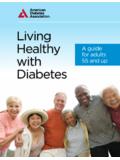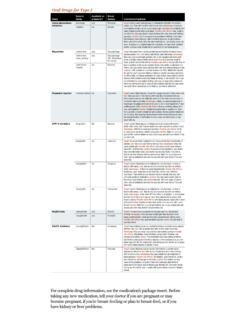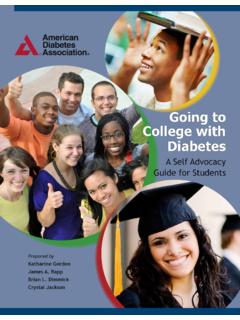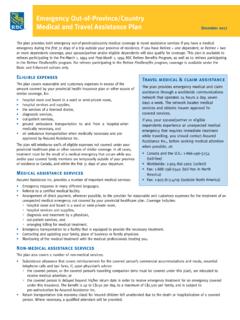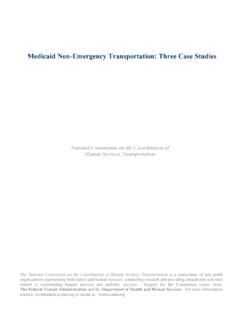Transcription of Diabetes Medical Management Plan (DMMP)
1 Diabetes Medical Management plan (DMMP). This plan should be completed by the student's personal Diabetes health care team, including the parents/guardian. It should be reviewed with relevant school staff and copies should be kept in a place that can be accessed easily by the school nurse, trained Diabetes personnel, and other authorized personnel. Date of plan :_____ This plan is valid for the current school year:_____ - _____. Student's Name:_ _____ Date of Birth:_____. Date of Diabetes Diagnosis:_____ o type 1 o type 2 o Other_____. School:_ _____ School Phone Number:_ _____. Tools Grade:_____ Homeroom Teacher:_____. School Nurse: _____ Phone:_____. CONTACT INFORMATION. Mother/Guardian:_____. Address:_ _____.
2 Telephone: Home_ _____ Work_ _____ Cell: _____. Email Address:_ _____. Father/Guardian:_____. Address:_ _____. Telephone: Home_ _____ Work _____ Cell:_____. Email Address:_ _____. Student's Physician/Health Care Provider:_____. Address:_ _____. Telephone:_____. Email Address:_ _____ Emergency Number:_ _____. Other Emergency Contacts: Name:_____ Relationship:_____. Telephone: Home_ _____ Work_____ Cell:_____. Helping the Student with Diabetes Succeed 99. Diabetes Medical Management plan (DMMP) Page 2. Checking Blood Glucose Target range of blood glucose: o 70 130 mg/dL o 70 180 mg/dL. o Other:_____. Check blood glucose level: o Before lunch o _____ Hours after lunch o 2 hours after a correction dose o Mid-morning o Before PE o After PE.
3 O Before dismissal o Other:_. o As needed for signs/symptoms of low or high blood glucose o As needed for signs/symptoms of illness Preferred site of testing: o Fingertip o Forearm o Thigh o Other:_. Brand/Model of blood glucose meter:_____. Note: The fingertip should always be used to check blood glucose level if hypoglycemia is suspected. Student's self-care blood glucose checking skills: o Independently checks own blood glucose o May check blood glucose with supervision o Requires school nurse or trained Diabetes personnel to check blood glucose Continuous Glucose Monitor (CGM): o Yes o No Brand/Model:_ _____ Alarms set for: o (low) and o (high). Note: Confirm CGM results with blood glucose meter check before taking action on sensor blood glucose level.
4 If student has symptoms or signs of hypoglycemia, check fingertip blood glucose level regardless of CGM. HYPOGLYCEMIA TREATMENT. Student's usual symptoms of hypoglycemia (list below): _____. _____. If exhibiting symptoms of hypoglycemia, OR if blood glucose level is less than _____mg/dL, give a quick-acting glucose product equal to _____ grams of carbohydrate. Recheck blood glucose in 10 15 minutes and repeat treatment if blood glucose level is less than _____ mg/dL. Additional treatment:_ _____. 100 Diabetes Medical Management plan (DMMP) Page 3. HYPOglYCEMIA TREATMENT (Continued). Follow physical activity and sports orders (see page 7). If the student is unable to eat or drink, is unconscious or unresponsive, or is having seizure activity or convulsions (jerking movements), give: Glucagon: o 1 mg o 1/2 mg Route: o SC o IM.
5 Site for glucagon injection: o arm o thigh o Other:_____. Call 911 (Emergency Medical Services) and the student's parents/guardian. Contact student's health care provider. HYPERGLYCEMIA TREATMENT. Tools Student's usual symptoms of hyperglycemia (list below): _____. _____. Check o Urine o Blood for ketones every _____hours when blood glucose levels are above _____mg/dL. For blood glucose greater than _____mg/dL AND at least _____hours since last insulin dose, give correction dose of insulin (see orders below). For insulin pump users: see additional information for student with insulin pump. Give extra water and/or non-sugar-containing drinks (not fruit juices): _____ounces per hour. Additional treatment for ketones:_____.
6 Follow physical activity and sports orders (see page 7). Notify parents/guardian of onset of hyperglycemia. If the student has symptoms of a hyperglycemia emergency, including dry mouth, extreme thirst, nausea and vomiting, severe abdominal pain, heavy breathing or shortness of breath, chest pain, increasing sleepiness or lethargy, or depressed level of consciousness: Call 911 (Emergency Medical Services) and the student's parents/. guardian. Contact student's health care provider. Helping the Student with Diabetes Succeed 101. Diabetes Medical Management plan (DMMP) page 4. INSULIN THERAPY. Insulin delivery device: syringe insulin pen o insulin pump Type of insulin therapy at school: o Adjustable Insulin Therapy o Fixed Insulin Therapy o No insulin Adjustable Insulin Therapy Carbohydrate Coverage/Correction Dose: Name of insulin:_____.
7 Carbohydrate Coverage: Insulin-to-Carbohydrate Ratio: Lunch: 1 unit of insulin per _____ grams of carbohydrate Snack: 1 unit of insulin per _____ grams of carbohydrate Carbohydrate Dose Calculation Example Grams of carbohydrate in meal = _____ units of insulin Insulin-to-carbohydrate ratio Correction Dose: Blood Glucose Correction Factor/Insulin Sensitivity Factor = _____. Target blood glucose = mg/dL. Correction Dose Calculation Example Correction dose scale (use instead of calculation above to determine insulin correction dose): Blood glucose _____ to _____ mg/dL give _____units Blood glucose _____ to _____ mg/dL give _____units Blood glucose _____ to _____ mg/dL give _____units Blood glucose _____ to _____ mg/dL give _____units 102 Diabetes Medical Management plan (DMMP) page 5.
8 INSUlIN THERAPY (Continued). When to give insulin: Lunch o Carbohydrate coverage only o Carbohydrate coverage plus correction dose when blood glucose is greater than _____mg/dL and ____ hours since last insulin dose. o Other:_. Snack o No coverage for snack o Carbohydrate coverage only o Carbohydrate coverage plus correction dose when blood glucose is greater than Tools _____mg/dL and ____ hours since last insulin dose. o Other:_____. o Correction dose only: For blood glucose greater than _____mg/dL AND at least _____ hours since last insulin dose. o Other:_____. Fixed Insulin Therapy Name of insulin:_. o ____ Units of insulin given pre-lunch daily o ____ Units of insulin given pre-snack daily o Other:_____.
9 Parental Authorization to Adjust Insulin Dose: o Yes No Parents/guardian authorization should be obtained before administering a correction dose. o Yes No Parents/guardian are authorized to increase or decrease correction dose scale within the following range: +/- _____ units of insulin. o Yes No Parents/guardian are authorized to increase or decrease insulin-to- carbohydrate ratio within the following range: _____ units per prescribed grams of carbohydrate, +/- ___ grams of carbohydrate. o Yes No Parents/guardian are authorized to increase or decrease fixed insulin dose within the following range: +/- _____ units of insulin. Helping the Student with Diabetes Succeed 103. Diabetes Medical Management plan (DMMP) page 6.
10 INSUlIN THERAPY (Continued). Student's self-care insulin administration skills: o Yes o No Independently calculates and gives own injections o Yes o No May calculate/give own injections with supervision o Yes o No Requires school nurse or trained Diabetes personnel to calculate/give injections ADDITIONAL INFORMATION FOR STUDENT WITH INSULIN PUMP. Brand/Model of pump: _ Type of insulin in pump: _____. Basal rates during school:_____. Type of infusion set:_____. o For blood glucose greater than _____ mg/dL that has not decreased within _____ hours after correction, consider pump failure or infusion site failure. Notify parents/guardian. o For infusion site failure: Insert new infusion set and/or replace reservoir.



